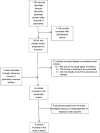Prenatal folic acid and risk of asthma in children: a systematic review and meta-analysis
- PMID: 24004895
- PMCID: PMC5369603
- DOI: 10.3945/ajcn.113.065623
Prenatal folic acid and risk of asthma in children: a systematic review and meta-analysis
Abstract
Background: Childhood asthma has become a critical public health problem because of its high morbidity and increasing prevalence. The impact of nutrition and other exposures during pregnancy on long-term health and development of children has been of increasing interest.
Objective: We performed a systematic review and meta-analysis of the association of folate and folic acid intake during pregnancy and risk of asthma and other allergic outcomes in children.
Design: We performed a systematic search of 8 electronic databases for articles that examined the association between prenatal folate or folic acid exposure and risk of asthma and other allergic outcomes (eg, allergy, eczema, and atopic dermatitis) in childhood. We performed a meta-analysis by using a random-effects model to derive a summary risk estimate of studies with similar exposure timing, exposure assessment, and outcomes.
Results: Our meta-analysis provided no evidence of an association between maternal folic acid supplement use (compared with no use) in the prepregnancy period through the first trimester and asthma in childhood (summary risk estimate: 1.01; 95% CI: 0.78, 1.30). Because of substantial heterogeneity in exposures and outcomes, it was not possible to generate summary measures for other folate indicators (eg, blood folate concentrations) and asthma or allergy-related outcomes; however, the preponderance of primary risk estimates was not elevated.
Conclusions: Our findings do not support an association between periconceptional folic acid supplementation and increased risk of asthma in children. However, because of the limited number and types of studies in the literature, additional research is needed.
Conflict of interest statement
The authors’ responsibilities were as follows—KSC, AMC, NFD, and RJB: designed the research; KSC, AMC, YPQ, and JM: conducted the research; KSC and AMC: analyzed data and wrote the manuscript; and KSC: had primary responsibility for the final content of the manuscript. None of the authors had a conflict of interest.
Figures



Similar articles
-
Multiple-micronutrient supplementation for women during pregnancy.Cochrane Database Syst Rev. 2015 Nov 1;2015(11):CD004905. doi: 10.1002/14651858.CD004905.pub4. Cochrane Database Syst Rev. 2015. Update in: Cochrane Database Syst Rev. 2017 Apr 13;4:CD004905. doi: 10.1002/14651858.CD004905.pub5. PMID: 26522344 Free PMC article. Updated.
-
Multiple-micronutrient supplementation for women during pregnancy.Cochrane Database Syst Rev. 2017 Apr 13;4(4):CD004905. doi: 10.1002/14651858.CD004905.pub5. Cochrane Database Syst Rev. 2017. Update in: Cochrane Database Syst Rev. 2019 Mar 14;3:CD004905. doi: 10.1002/14651858.CD004905.pub6. PMID: 28407219 Free PMC article. Updated.
-
Folate supplementation in people with sickle cell disease.Cochrane Database Syst Rev. 2018 Mar 16;3(3):CD011130. doi: 10.1002/14651858.CD011130.pub3. Cochrane Database Syst Rev. 2018. PMID: 29546732 Free PMC article.
-
Probiotics in infants for prevention of allergic disease.Cochrane Database Syst Rev. 2025 Jun 13;6(6):CD006475. doi: 10.1002/14651858.CD006475.pub3. Cochrane Database Syst Rev. 2025. PMID: 40511642 Review.
-
Intermittent oral iron supplementation during pregnancy.Cochrane Database Syst Rev. 2015 Oct 19;2015(10):CD009997. doi: 10.1002/14651858.CD009997.pub2. Cochrane Database Syst Rev. 2015. PMID: 26482110 Free PMC article.
Cited by
-
Periconceptional folic acid supplementation is a risk factor for childhood asthma: a case-control study.BMC Pregnancy Childbirth. 2022 Mar 18;22(1):220. doi: 10.1186/s12884-022-04567-5. BMC Pregnancy Childbirth. 2022. PMID: 35303823 Free PMC article.
-
Diet and Asthma: Is It Time to Adapt Our Message?Nutrients. 2017 Nov 8;9(11):1227. doi: 10.3390/nu9111227. Nutrients. 2017. PMID: 29117118 Free PMC article. Review.
-
Folic acid supplementation and preterm birth: results from observational studies.Biomed Res Int. 2014;2014:481914. doi: 10.1155/2014/481914. Epub 2014 Mar 3. Biomed Res Int. 2014. PMID: 24724083 Free PMC article. Review.
-
The impact of modifiable risk factor reduction on childhood asthma development.Clin Transl Med. 2018 Jun 11;7(1):15. doi: 10.1186/s40169-018-0195-4. Clin Transl Med. 2018. PMID: 29892940 Free PMC article. Review.
-
Maternal Folate Intake during Pregnancy and Childhood Asthma.Am J Respir Crit Care Med. 2017 Jan 15;195(2):155-156. doi: 10.1164/rccm.201608-1713ED. Am J Respir Crit Care Med. 2017. PMID: 28084816 Free PMC article. No abstract available.
References
-
- Moorman JE, Akinbami LJ, Bailey CM, Zahran HS, King ME, Johnson CA, Liu X. National surveillance of asthma: United States, 2001–2010. National Center for Health Statistics Vital Health Statistics. 2012;3(35) - PubMed
-
- Koterba AP, Saltoun CA. Chapter 9: asthma classification. Allergy Asthma Proc. 2012;33(suppl 1):S28–31. - PubMed
-
- National Heart Lung and Blood Institute, National Asthma Education and Prevention Program. Expert panel report 3: guidelines for the diagnosis and management of asthma: full report 2007. Washington, DC: US Department of Health and Human Services; 2007.
-
- Martinez FD, Wright AL, Taussig LM, Holberg CJ, Halonen M, Morgan WJ, The Group Health Medical Associates Asthma and wheezing in the first six years of life. N Engl J Med. 1995;332:133–8. - PubMed
Publication types
MeSH terms
Substances
Grants and funding
LinkOut - more resources
Full Text Sources
Other Literature Sources
Medical
Molecular Biology Databases

